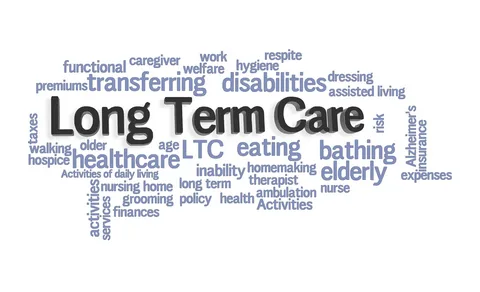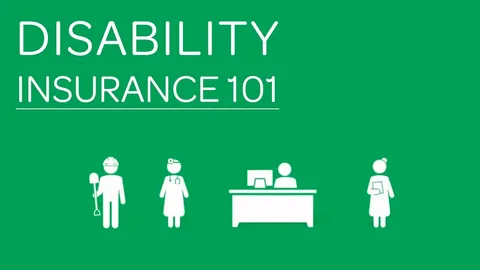Understanding Personal Loans: Types, Rates, and Best Practices
Navigating the world of personal loans can be challenging for many individuals. Understanding the various types of personal loans, their rates, and best practices for borrowing can help you make informed financial decisions. Whether you’re looking to consolidate debt, finance a big purchase, or cover unexpected expenses, personal loans offer flexibility and can be a valuable financial tool. This guide will delve into the details of personal loans, providing the information you need to make confident borrowing choices.
1. What is a Personal Loan?
A personal loan is an unsecured loan that individuals can borrow from financial institutions such as banks, credit unions, or online lenders. Unlike secured loans that require collateral, personal loans rely on the borrower’s creditworthiness. This type of loan can be used for various purposes, including consolidating debt, financing a vacation, or covering medical expenses. Understanding what personal loans are is the first step toward making an informed borrowing decision.
2. Types of Personal Loans
Personal loans come in various forms, each tailored to meet specific borrowing needs. The most common types include fixed-rate loans, where the interest rate remains constant throughout the loan term, and variable-rate loans, where the interest rate may fluctuate. Additionally, there are debt consolidation loans designed to combine multiple debts into a single payment, and installment loans that are repaid in fixed monthly payments over a set period. Understanding the different types of personal loans can help you choose the right option for your financial situation.
3. How Personal Loan Interest Rates Work
Interest rates on personal loans can significantly impact the total cost of borrowing. Generally, rates vary based on factors such as the borrower’s credit score, loan amount, and loan term. Borrowers with higher credit scores typically qualify for lower interest rates, making it essential to maintain good credit health. Lenders often provide annual percentage rates (APRs) that reflect the total cost of borrowing, including interest and fees. Understanding how personal loan interest rates work is crucial for budgeting and planning your repayments.
4. Factors Affecting Personal Loan Rates
Several factors influence personal loan rates, including credit history, income level, and debt-to-income ratio. Lenders assess your creditworthiness by reviewing your credit score, which reflects your borrowing history. A higher credit score indicates a lower risk for lenders, often resulting in more favorable rates. Additionally, your income and existing debt obligations play a significant role in determining your eligibility for loans and the rates offered. Understanding these factors can help you prepare for the loan application process.
5. How to Apply for a Personal Loan
Applying for a personal loan involves several key steps. First, assess your borrowing needs and determine how much you need to borrow. Next, shop around for lenders and compare rates and terms. Many lenders offer online pre-qualification processes that allow you to see potential rates without affecting your credit score. Once you select a lender, gather the necessary documentation, such as proof of income, identification, and financial statements. Following these steps can simplify the application process and increase your chances of approval.
6. The Importance of Credit Scores
Your credit score is a critical factor that lenders consider when evaluating your loan application. It reflects your creditworthiness and borrowing history, impacting the interest rates and terms you receive. Maintaining a good credit score involves making timely payments, reducing debt, and regularly monitoring your credit report for errors. Understanding the importance of credit scores and how they affect your personal loan options can empower you to take proactive steps toward better financial health.
7. Tips for Improving Your Credit Score
Improving your credit score can enhance your chances of securing a personal loan with favorable rates. Start by paying bills on time, as payment history significantly affects your score. Reducing outstanding debts and keeping credit card balances low also contribute positively. Additionally, avoid opening multiple new credit accounts in a short period, as this can negatively impact your score. Implementing these strategies can help you improve your creditworthiness before applying for a personal loan.
8. What to Consider Before Borrowing
Before taking out a personal loan, it’s essential to consider various factors to ensure it aligns with your financial goals. Evaluate the loan’s purpose, the total cost of borrowing, and your ability to repay it comfortably. Additionally, consider the loan term and monthly payment amount, ensuring they fit within your budget. Understanding your financial situation and the implications of borrowing can help you make informed decisions and avoid potential pitfalls.
9. Managing Personal Loan Payments
Once you secure a personal loan, effectively managing your payments is crucial for maintaining financial health. Set up a budget that includes your loan payment alongside other monthly expenses. Consider automating your payments to avoid missed deadlines and potential late fees. If your financial situation changes, explore options for refinancing or adjusting your payment plan. Proactive management of your personal loan can help you stay on track and prevent future financial stress.
10. Common Mistakes to Avoid
Many borrowers make common mistakes when applying for and managing personal loans. One frequent error is not shopping around for the best rates and terms. Failing to read the fine print can lead to unexpected fees and unfavorable conditions. Additionally, some borrowers underestimate the total cost of borrowing, including interest and fees, which can lead to financial strain. Awareness of these pitfalls and avoiding them can enhance your borrowing experience.
11. Alternatives to Personal Loans
While personal loans can be a valuable financial tool, they aren’t always the best option for every situation. Explore alternatives such as credit cards for smaller expenses or home equity lines of credit for larger financial needs. Peer-to-peer lending platforms can also provide competitive rates. Understanding your options and evaluating which alternative may work best for your situation can empower you to make informed financial decisions.
12. The Role of Lenders in the Loan Process
Lenders play a significant role in the personal loan process, and understanding their functions can help streamline your experience. They evaluate your application, determine your eligibility, and set the terms of your loan. Building a good relationship with lenders can be beneficial, as it may lead to better terms and conditions in the future. Learning about the lender’s process and requirements can help you prepare effectively for your application.
13. Understanding Loan Terms and Conditions
Before signing a loan agreement, thoroughly review the terms and conditions. This includes the interest rate, repayment schedule, fees, and any penalties for late payments. Understanding the fine print can prevent misunderstandings and ensure you are fully aware of your obligations. If you have any questions or concerns, don’t hesitate to ask the lender for clarification. Being well-informed about your loan agreement is essential for successful borrowing.
14. The Importance of Financial Literacy
Building financial literacy is key to navigating the world of personal loans and making sound financial decisions. Educate yourself about financial terms, budgeting, and responsible borrowing practices. Numerous resources, such as books, online courses, and financial advisors, can help enhance your knowledge. Improving your financial literacy empowers you to manage your personal finances effectively and make informed choices regarding loans and investments.
15. Conclusion
Understanding personal loans, including their types, rates, and best practices, is essential for successful borrowing. By assessing your financial goals, knowing your credit score, and managing your payments, you can make informed decisions that lead to a brighter financial future. Whether you’re consolidating debt, funding a major purchase, or managing unexpected expenses, personal loans can be a valuable resource when used wisely. Embrace the knowledge gained from this guide and approach your borrowing journey with confidence.











3 thoughts on “Understanding Personal Loans: Types, Rates, and Best Practices”